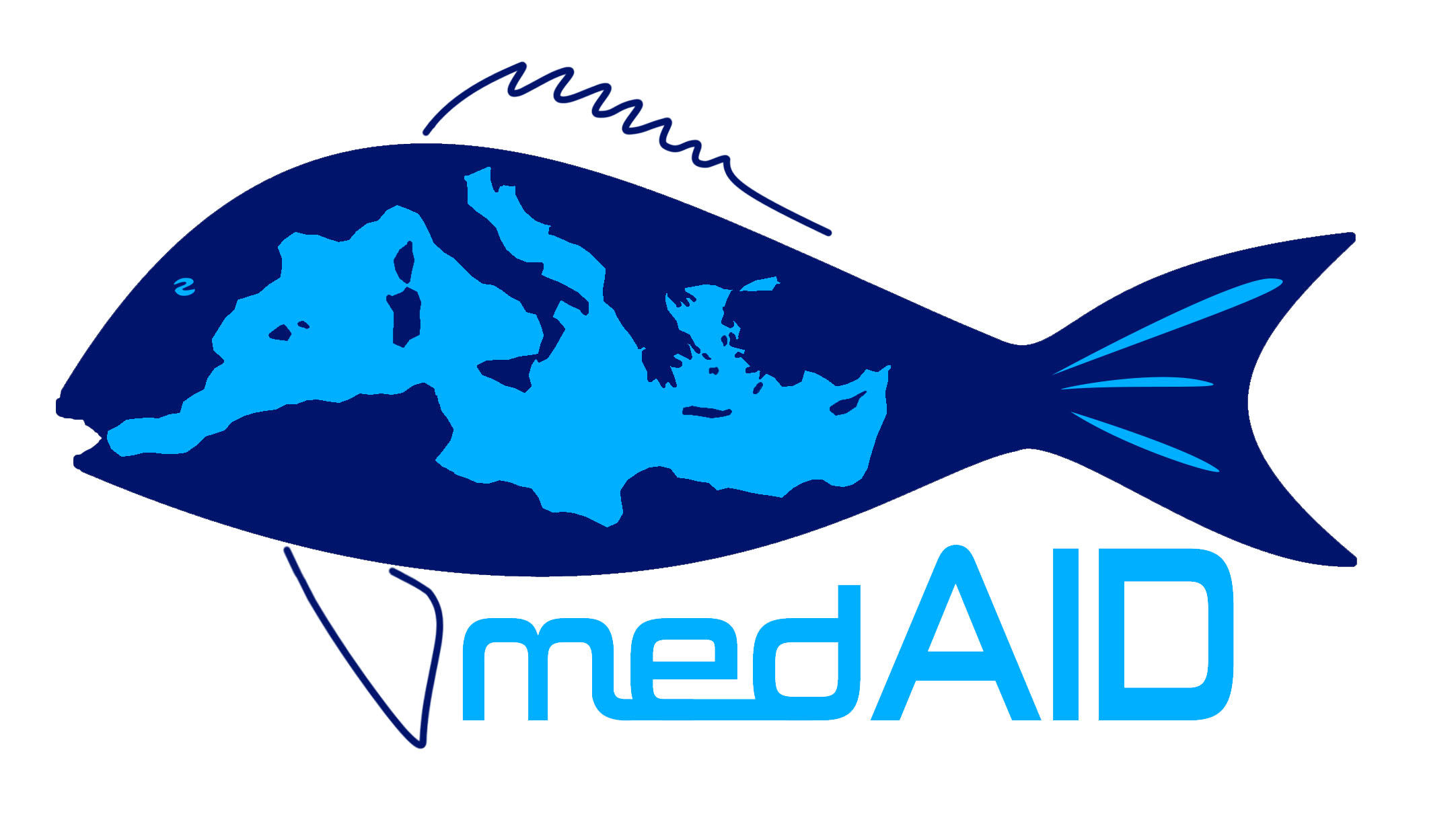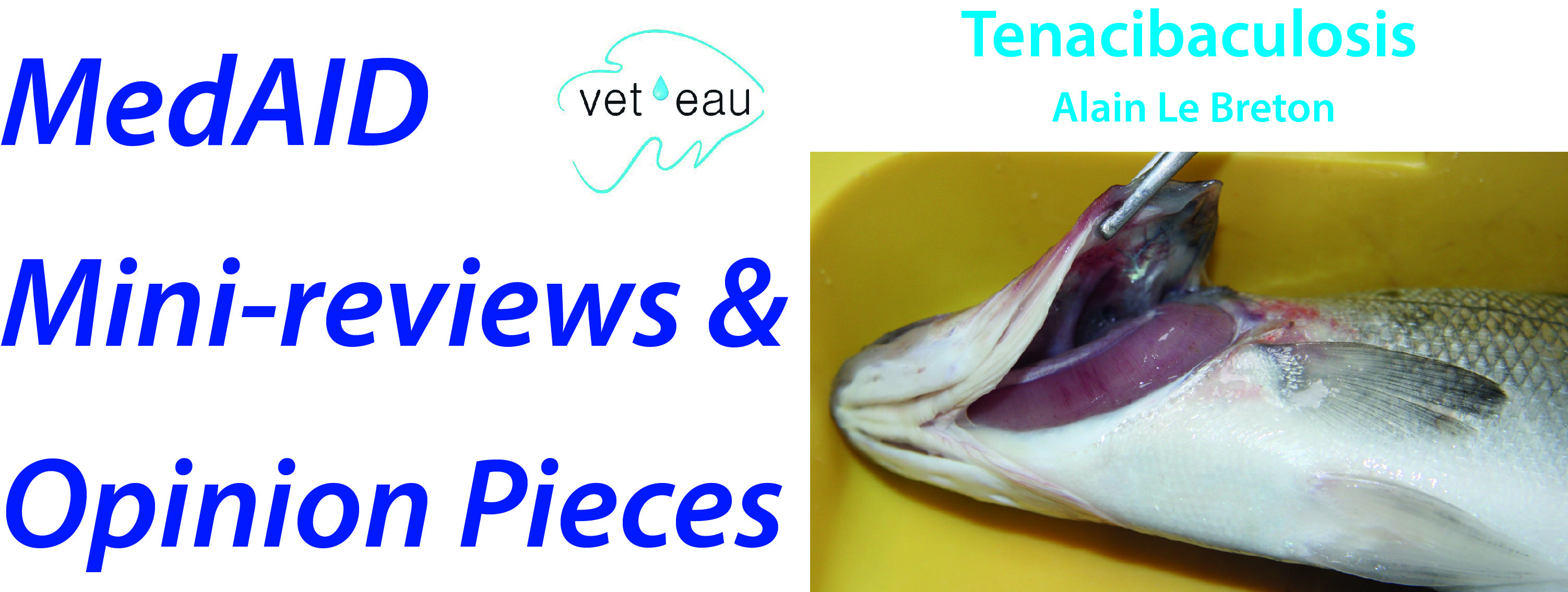Tenacibaculum infection (previously named flexibacteriosis) represents one of the first bacterial conditions being reported in marine aquaculture in a large range of species including flat fish such as sole and turbot; and finfish, namely sea bass and sea bream (McVicar and White, 1979;Masumura& Wakabayashi, 1977;Bernardet, 1989;Toranzo et al., 2005). More recently, at the 2018 Annual Workshop of the National Reference Laboratories for Fish Diseases (Anonymous, 2018) or from the Assessment of the disease situation made by MedAID (Cidad et at., 2018) tenacibaculosis was considered, together with vibriosis, one of the most important disease for European seabass. In some marine areas or in recirculation systems, they severely threaten production with mortalities rising over 30%.
Causative agent
Bacteria from the genus Tenacibaculum are Gram-negative filamentous bacteria, 2-30 µm long and 0.5 µm in diameter, show gliding motility on wet surfaces, and produce catalase and cytochrome oxidase (Wakabayashi et al., 1986). Colonies are flat, pale yellow with irregular margins and adhere strongly to FMM agar, absorb Congo red but do not contain a cell-wall-associated flexirubin–type pigment (Avendano-Herera et al., 2004). All tested strains of T. maritimum are biochemically homogeneous but antigenic heterogenicity was established due to differences in the “O” chains of LPS revealing 3 major O-serotypes from strictly marine fishes which are host specific; O1 is predominant in sea bream and sea bass, O2 in turbot, O1 and O3 but also O2 in sole, and O3 and recently also O2 in salmon. Pathologicalproperties of the bacterium, such as a strong adherence to the skin mucus of different fish species and the capacity toresist its bactericidal activity have been pointed out as possible virulence factors (Margarinos et al., 1995). Pazos (1997) proved that extracellular products (ECP) of this species have very high proteolytic activity with an ability to degrade gelatin, amylase, casein and nucleases.
Epidemiology of the disease
Pathological changes caused by tenacibaculosis are generally affecting fish from nursery phase to pre-growing fish up to 80-100 grams average weight. Prevalence and intensity of the infections vary in relation to environmental parameters and zootechnical rearing conditions (Avendano-Herera et al., 2006). Severity of clinical symptoms and mortality ratesare influenced byfish size, water quality parameters and temperature, rearing factors such as handling, mechanical lesions or stress and interfering parasitic infestations (Brevik, 2015). An increased prevalence and severity of the disease has been reported at higher temperatures, above 15oC (Toranzo et al., 2005).
There is no host specificity, and wild fish may serve as reservoirs of infection. Some studies allude the involvement of jellyfish (Ferguson et al. 2010) and sea lice (Barker et al. 2009) as vectors of the bacterium. Chronic presence of the bacterium in the mucus layer suggests fish mucus to be a reservoir (Avendano-Herrera et al., 2006). Many studies support the hypothesis on Tenacibaculum spp. as an opportunistic pathogen that primarly causes extensive skin lesions and gill abrasion, and subsequent systemic infections (Avendano-Herrera et al., 2006). Wakabayashi et al. (1986) proved that topical application of bacterial culture on the mouth or tail causes a fatal infection, while intraperitoneal and artificial intramuscular infection does not cause disease (Avendano-Herrera et al., 2006).
Clinical signs
Clinical signs of tenacibaculosis are variable according to fish species and type of infection. Affected fish show loss of appetite, become lethargic and show skin lesions around the eyes, on the head, and also bone nodules are seen. The lesions are characterized by increased mucus production and presence of whitish necrotic tissue (Smage et al., 2016). Characteristic lesions on the body surface of fish are described, such as ulcers, necrosis, eroded mouth, frayed fins and tail rot, and sometimes necrosis of the gills and eyes (McVicar and White, 1979; Campbell and Buswell, 1982; Wakabayashi et al. 1986; Baxa et al., 1986, Devesa et al. 1989; Chen et al. 1995, Handlinger et al., 1997; Ostland et al., 1999; Cepeda & Santos, 2002). Fish with gill infections may display an increased respiratory rate (Mitchell and Rodger, 2011) with visible yellow or brown mats on the pale gills, and extensive areas of severe necrosis. Although all age classes may be infected, younger fish suffer a more severe form of the disease. The onset of disease is influenced by a multiplicity of environmental and host related factors, such as skin surface condition (Margarinos et al., 1995). A systemic disease may also result involving different internal organs. The loss of epithelial fish surface, typical of this disease, is also a port of entry for other bacterial or parasitic pathogens. In the Mediterranean area those infections are initially external, affecting the dermal and epidermal layers. Lesions usually develop as co-infections, becoming ulcerative and tenacibaculosis very often affects sea bass in a mixed infection with V. anguillarum at the end of the winter, causing high and persistent mortalities (Zrnčić et al. 2013).
Diagnostics
Diagnosis is done on fresh smears from scrapping of the lesionsby light microscopic observation directly or after quick staining (MGG/RAL555). Tenacibaculum maritimum is observed as long, gliding Gram negative bacteria (Le Breton, personal communication).
For the past five years, clinical symptoms observed are more diversified, including deeper ulcerative lesions. Correlatively, increasing failure in treatmentsare reported. Monitoring and research programs such as the FUI Pathotrackfish have confirmed that T.maritimum actually represents only 50% of the strains isolated from clinical cases (Arnaud et al., 2018). Diagnostic methods recently applied to fish pathogen identification based on proteomic fingerprinting using high-throughput mass spectrometry MALDI-TOF BRUCKER spectrometry (Toranzo, 2015) or genomics (MLST, WGS) confirm the presence or the emergence of different pathogenic species (Habib et al., 2014). In most cases, co-infections by at least two Tenacibaculum strains are noticed, which may explain the evolution of clinical aspects, different pathogenicity patterns and poor treatment efficacy.
Disease management
Disease outbreaks through T. maritimumcan be avoided or reduced by controlling fish density, reducing stress conditions, avoiding overfeeding as well as manipulating the water temperature (15oC), and lowering the salinity to 10g/l (Soltani et al., 1996).
The accurate diagnostic might open the possibility for development of the efficient vaccine. Currently there is a single commercial vaccine for turbot in Spain (Romalde et al., 2005), and several vaccines against tencibaculosis were tested for different marine fish species as for barramundi in Singapore (Rafidah et al., 2015), salmon in Tasmania (Van Gelderen et al., 2009) or salmon in Chile (Tobar, 2015).
However, the accurate identification of Tenacibaculum strains from sea bass and sea bream opens the field for preparation of monovalent or polyvalent auto-vaccines adapted to each situation.
In vitro susceptibility studies of isolates from different species and different geographical regions exhibit a similar pattern, with susceptibility to tetracyclines, potentiated sulphonamides and fluoroquinolones, and a resistance to kanamycin, neomycin, and quinolones (Avendano-Herrera et al. 2006). However, very often field results are not coherent with in vitro studies. So far as infected fish become anorexic very soon after infection, bath treatment seems to be more effective than oral (Soltani et al. 1995).
The use of specific media for cultivation and in vitro antibiotic sensitivity testing, as well as swabs with adapted transport media, allow a betterisolation and identification of thesestrains. This is a key point to apply efficient therapeutic treatments. Still, many questions remain without answers in the field.
![]() Complete article with references
Complete article with references
 Author:
Author:
Alain Le Breton
VET’EAU, France

